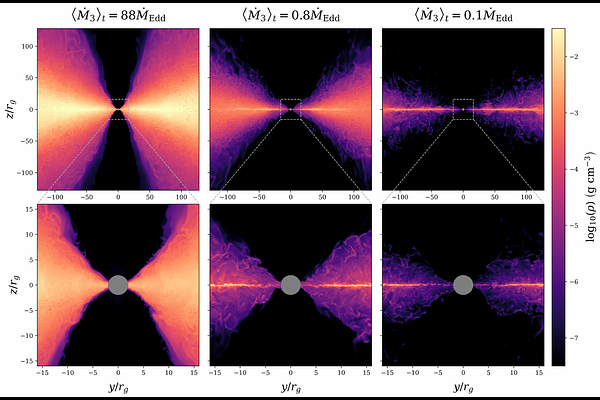Radiation GRMHD Models of Accretion onto Stellar-Mass Black Holes: I. Survey of Eddington Ratios

Radiation GRMHD Models of Accretion onto Stellar-Mass Black Holes: I. Survey of Eddington Ratios
Lizhong Zhang, James M. Stone, Patrick D. Mullen, Shane W. Davis, Yan-Fei Jiang, Christopher J. White
AbstractWe summarize results from a survey of radiation-dominated black hole accretion flows across a wide range of mass accretion rates, as well as two values of black hole spin and initial magnetic field geometry. These models apply an algorithm targeting direct solutions to the radiation transport equation in full general relativity and have been enabled by access to modern exascale computing systems. Super-Eddington accretion flows form geometrically thick radiation pressure supported disks that drive powerful equatorial outflows. A narrow funnel-shaped photosphere in the inner region results in very low radiative efficiencies in this regime. The structure of near- and sub-Eddington accretion depends on whether there is net vertical magnetic flux at the midplane of the disk. With net flux, the disk forms a thin, dense layer at the midplane surrounded by a magnetically-dominated corona, whereas without net flux the disk remains magnetically dominated everywhere. Although none of our models achieve the magnetically arrested disk (MAD) regime, those with net vertical flux and a rapidly spinning black hole still produce powerful relativistic jets. Our calculations adopt simple opacity models (with scalings appropriate to stellar-mass black hole accretion). We discuss the application of our results to observations of X-ray binaries and ultraluminous X-ray sources such as Cyg X-3 and SS433. We also speculate on the application of our super-Eddington models to the interpretation of little red dots (LRDs) recently discovered by JWST.